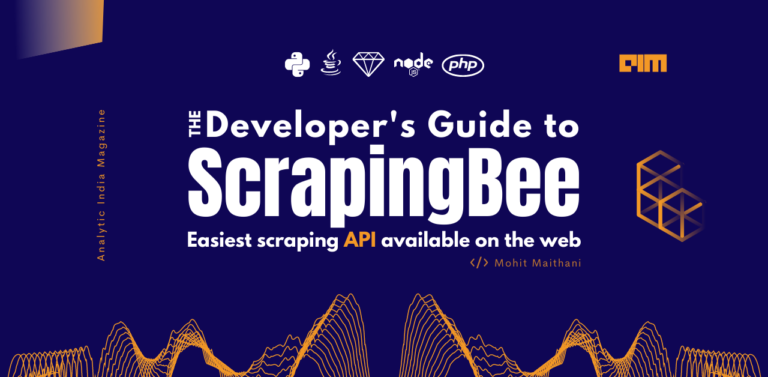Pegasystems, a 35-year-old company has been a leader in developing software for customer engagement and operational excellence. Pega’s adaptive, cloud-architected software – built on its unified Pega Platform empowers people to rapidly deploy, and easily extend and change applications to meet strategic business needs. Over the years, Pega has delivered award winning capabilities in CRM and BPM, powered by advanced artificial intelligence and robotic automation, to help the world’s leading brands achieve breakthrough business results.
Analytics India Magazine (AIM) interacted with Suman Reddy, who is the managing director and country head for Pegasystems, India. As a part of the executive management team, he has helped the company grow from a 100 million USD to 683 million USD revenue in 10 years. Having built Pegasystems a 1300 staff organization across multiple geographies, he has been instrumental in creating an innovation hub and delivered industry leading CRM, BPM, Case Management and Enterprise Mobile products for over a decade.
In his interaction, Reddy spoke in length about how Pegasystems has become a pioneer in the field of artificial intelligence and deliver game changing results for the enterprise.
AIM: How has Pega’s journey evolved from its start, and where is it placed today?
Suman Reddy: Pega is now a 35-year-old company with a speciality Business Process Management. We have done exceptional handling with banks, and that paved the way to workflow automation or process automation, business rules. The current generation is a model-driven architecture on the Pega 7 platform, which allows business and IT to sit together, and IT to directly capture objectives from business on how systems need to work. Subsequently, these systems automatically generate the code for you. So all the automation you hear about these days was fundamental to our technology 10 years ago, when we released this.
Architects on this technology work on a very high level of abstraction. They’re not allowed to write code but they’re designing, architecting and configuring these systems and allowing the systems to generate the code. The advantages of using this route is that it is low-code system and allows you to build your systems for change, which comes from our motto ‘Build For change’. Because building new systems is a complex process, it is important to understand the requirements, detail out the architecture, think of future enhancement, and then build the system. Now with the pace of change becoming so quick, every month has to have updated versions. The architecture helps you make changes very easily, and allows business representatives to make changes on their systems, because its so friendly to use (you don’t need or write code).
Our evolution is based on this architecture for the last 10 years and we’ve been operating in this space called Business Process Management, which is now rebranded as DPA (Digital Process Automation). Both Gartner and Forrester recognize this new term. It’s estimated to be a $3 billion industry, and we are the dominant player there. We’ve not just been recognized by them as the leader, but we generate the most revenues in our market as well.
We compete with the IBMs and the Oracles, SAPs and dozens of new-gen entrants like Filenet’s. To beat us, the big corporations have bought companies over a period of time, like an OpenText or SoftwareAG. They’ve made many acquisitions over a period of time, and now we’ve been left with not many players as five different products stitched together. We call them ‘Frankenstacks’, like a Frankenstein, a Frankenstack is made of dead companies. And that’s where we win, because right from the start, we don’t stitch them. We completely rewrite that software, that new capability into our software. That way, we still have our unified platform on which we build everything. The DPA/BPM is built on top of this platform.
AIM: Would you like to elaborate on how Pegasystems is ensuring a smooth customer experience using technologies like AI?
Suman Reddy: As we pivoted during the past two years, we had decided that we wanted to become the leader in CRM technologies focused only on Global 3000 companies. We wanted to create a unified CRM model. One of the inherent capabilities of BPM technologies is it lends itself to CRM for service. CRM has three pillars– sales, marketing and service that makes up your customer engagement portfolio. BPM naturally is inclined to the service arm. So traditionally we weren’t called a CRM company, but CRM solutions were some of our largest implementations. Many companies like top banks, credit card companies, telecom companies were using our software to service their customers.
Around 7 years ago, we made a strategic investment by acquiring a company called Chordiant, aiming a research in decisioning and analytics technologies, which again relates to the marketing aspect of CRM. We bought that technology, and although a large number of customers were using that technology, we decided to rewrite that technology into out platform. The natural addition was sales automation. That’s where we again invested into the third arm. Therefore, we now offer what we called ‘Unified CRM offering’, with marketing, sales and service all built on one platform.
The advancements we’ve done over a period of time, are in strengthening decisioning and analytic abilities, as well as making heavy investments in AI. AI gives us the power to create what we would call the ‘Decision Hub’ right in the heart of our entire CRM platform. The advantage is that it takes learnings and inputs from different functions and can learn from sales, marketing and service functions.
I’ll give you an example: if a top bank uses our unified architecture, and the bank’s marketing department has an objective of acquiring new customers, they send you marketing links to attract you with bunch of offers and deals. But you never liked those offers and didn’t show interest. However, there is another offer you clicked on a website, for a cashback offer provided on a new credit card. In traditional organizations, there are different transactions from different departments tracking that information. They necessarily don’t talk to each other to exchange activities. But at Pega, since AI is working at the heart of this interaction, understands it is the same customer who never clicked on the links sent via mail, but went to the website to research and showed interest there.
So now the marketing department can analyse this behavior, and then offer something like free cash back credit card, when the customer is interested to open a bank account. This is a small example of how central AI can create tailored interactions to convert prospects into customers.
AIM: What are your core competencies and capabilities that differentiates you from your competitors in the market?
Suman Reddy: Customers can be irritated if you’re over-marketing to them. If they want to buy a mobile, and you sell them calling cards, you’re going to tick them off. We prevent such occurrences through the AI engine called ‘Next Best Action’. It computes data from all the data sources, applies machine learning, understanding the need to customer is coming to you for. Therefore, even your call centre rep can be aided by AI, which predicts the need the customer is calling for. Therefore, you need to offer the Next Best Action, to know what offer to roll out.
Basically, you’re creating intelligence in various conversation in CRM channels i.e. marketing, sales and service. That intelligence is possible because of the unified architecture, AI and data analytics from a single source of truth is how we describe it. The single source of truth is where all these departments come together. Now there’s a practical challenge: not every organization buys unified software. Because I might be selling it to the sales department, and they’re only worried about sales, or service, who might be worried only about service. But we give you the entire software, and it is up to you to switch on sales or functions you’re not using. But when you decide tomorrow to leverage Pega’s technology in the unused functions, they can easily build or migrate their technology to Pega, and the data will still be retained. Those are the advantages of using an incremental model. That’s the overview of what we do, our model, our competitive landscape etc.
AIM: Can you cite some examples about use cases of AI and robotics in businesses?
Suman Reddy: There are banks which I talked about, and there are large telecom companies in Europe, servicing 8 million subscribers in those countries, and leveraging artificial intelligence to do all of their customer retention planning. These companies found out that their customers are dropping out of their plans, and they leveraged this Decision Hub technology to understand their customer pain points. When they read the analytics reports, AI gave them perspectives of true pain points, where their service department was doing cross-selling and upselling of incorrect services. If somebody was coming in for some task, and if he was bombarded with unrelated action items instead of fulfilling their request, you’re going to have an unhappy customer. Our AI systems were able to offer Next Best Actions.
The other use case is that of Sprint, a large company in the USA. The CMO of the company talked about how for three consecutive years it was losing a lot of subscribers to T-Mobile, AT&T etc. Not only were we able to stem this loss, but we were able to stabilise and accelerate their growth. Our software capabilities helped not just their current interactions with existing customers, making them more meaningful and provided customer satisfaction on their service channels, but we provided intelligence on their sales channels. There are multiple services on how governments are using our offerings to create a platform for all citizen services, right from applying for a driving license, to opening a business. We’re applying AI to gather insights from the constituents of the state, so the government can optimise their services, which reach citizens.
AIM: How is data being applied nowadays in India? How AI becomes central to it?
Suman Reddy: We’re generating a lot of data with the proliferation of JAM (JanDhan, Aadhar and Mobile). While people are grappling the data security, there is still a huge scope to leverage this. When you have large sets of data, there is enormous potential for businesses to leverage this, as some of my peers have been talking about. Large banks, insurance firms, who are interested in buying our software, are looking to leverage these technologies to see how AI can be applied on this data. Additionally, the customer is very demanding nowadays, especially the young population. Netflix, Amazon and Google are all AI driven, in fact a lot of what you interact has AI behind it. Customers are used to this level of an experience, and they expect the same with telecom, banks and governments.
AIM: How is Pegasystems placed in the big data analytics market?
Suman Reddy: As an enterprise software-maker selling to Fortune 500, our set of global 3000 companies, big data and analytics is one component of the overall functioning. Big data and analytics can be applied at various levels of the customer’s data sources or assets. Analytics is a strong piece of our functionality.
AIM: How many data analytics/ AI experts are with Pega currently? What are the skills you look for while hiring them?
Suman Reddy: We have a strong team across the world, but what I would like to focus on is our $160 million acquisition of text analytics, sentiment analytics and more. That’s the level of our competencies. We have analysts in Bengaluru, Hyderabad, Amsterdam and more and we don’t look at AI as a separate skill anymore. Just like how we used to talk of awareness in user interfaces back in the day, AI is becoming mainstream. I do expect my team of 1500 to have this level of understanding about data analytics and AI, because it is becoming central to technology function. We have core experts in these domains across our R&D centres, across the world. Machine learning, Python, NLP, regression analysis are some of the prospects we look for.
AIM: What are the challenges in sourcing talent for these domains?
Suman Reddy: This is an emerging space and there’s no readymade talent in the industry. In fact, one of our talent sourcing partners have recently collaborated with IIIT-H with AI specific coaching, for working employees (lateral employees). But I think its also an opportunity for companies and academies to provide quality training. I think India solves skill problems, something I’m not worried about now. We quickly identify domains with lack of experts, quickly bridge them, and sometimes end up with too many skilled people, plugging the demand requirement.
AIM: Is there a need to have policies in place to regulate the use of AI?
Suman Reddy: We’ve taken a strong position regarding AI algorithms that are being developed. We’ve rolled out this industry-first option for the industry to toggle the level of transparency in their AI systems. Therefore, you get to see the reasoning the AI algorithm has behind arriving at decisions. So we give organisations the option to control the transparency of this decision making. In the foreseeable future however, I’d like to see some more regulations, and do’s and don’ts so everyone falls under a common umbrella.



















































































